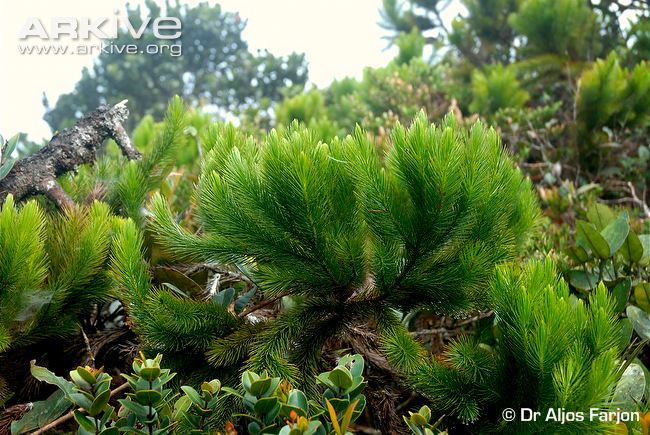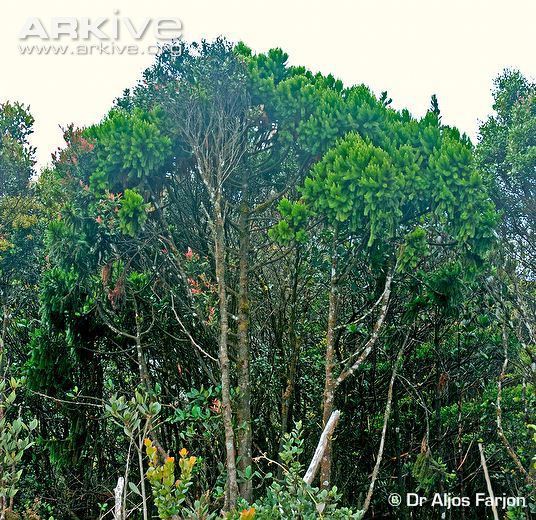Dacrydium comosum was first described by Corner in 1939.
Description. Dacrydium comosum is a coniferous evergreen shrub belonging to the Podocarpaceae family typically growing 6 to 12 feet (2 - 4 m) tall, to a tree up to 36 feet (12 m) tall growing on exposed ridges. Foliage is densely branched with branches all turning upward and the aggregated tufts forming a nearly flat to umbrella-like crown. Juvenile leaves spread perpendicular to the branch and then curve forward, parallel with the branch, are pungent, lanceolate in shape, up to 1.3 inches (33 mm) long, sharply keeled on the dorsal side, nearly flat or slightly concave on the axial side. Adult leaves are similar to juvenile leaves except that the upper part is usually straight so that the apices are directed somewhat outward, 0.5 to 0.8 inch long and slightly expanded at the basal attachment. Fertile structures mostly lateral, subtended by a small cluster of reduced leaves which are 0.16 inch (4 mm) long. Pollen cones are 0.35 inch (8-10 mm) long; seed-bearing structure consists of several lanceolate bracts, 0.08 inch (2 mm) long, one or two of which are usually fertile.
Distribution. This species is known only in Malaysia, on a crest separating Selangor and Pahang and on the G. Tahan massif; also known as Pine Tree Hill, Ulu Kali or Ginting Highland where it grows on exposed ridges as a local dominant species in stunted mossy forests at elevations between 4,600 and 7,000 feet (1,440 and 2,200 m). It should be noted that this species is considered endangered due to habitat loss.

